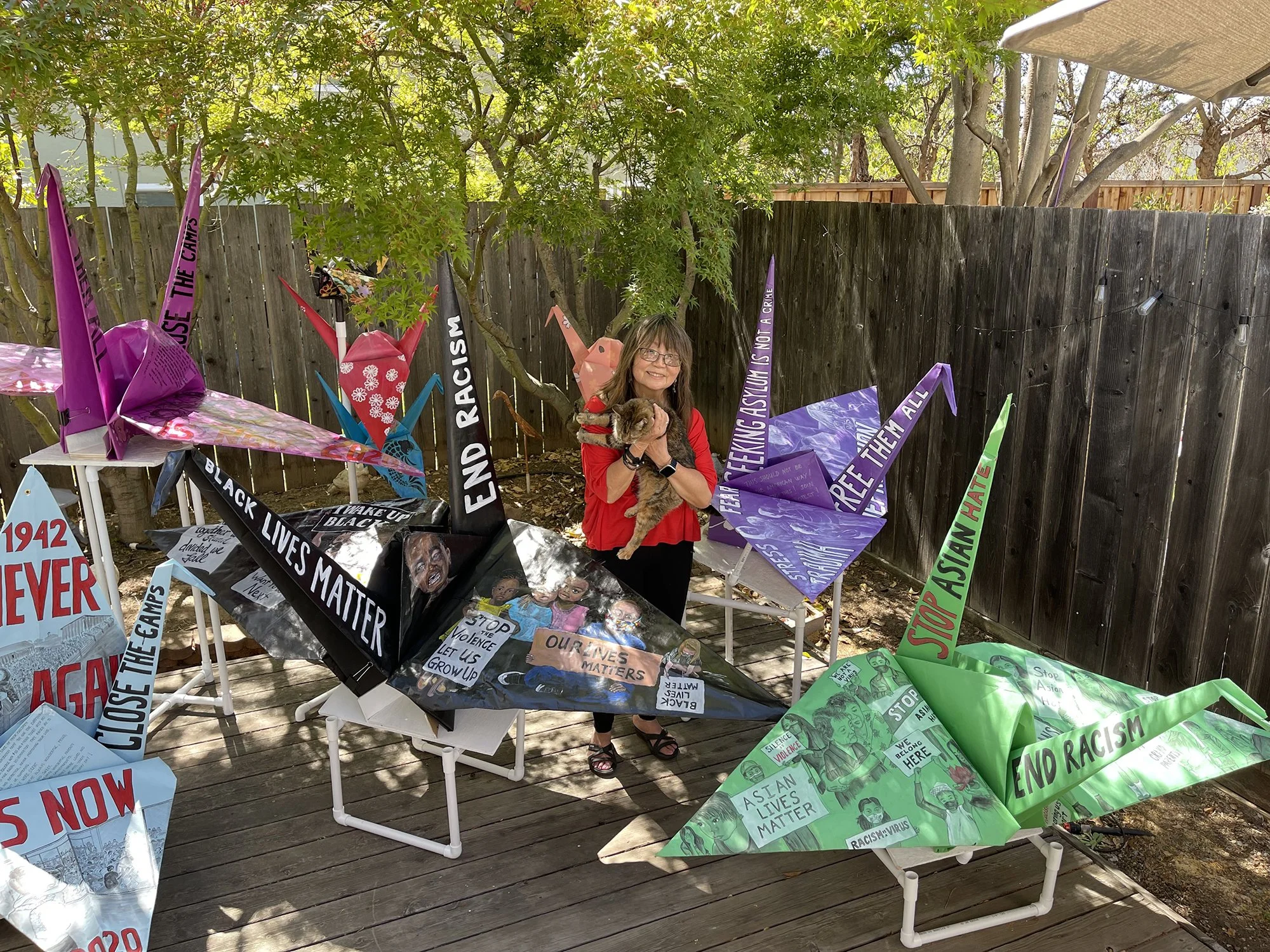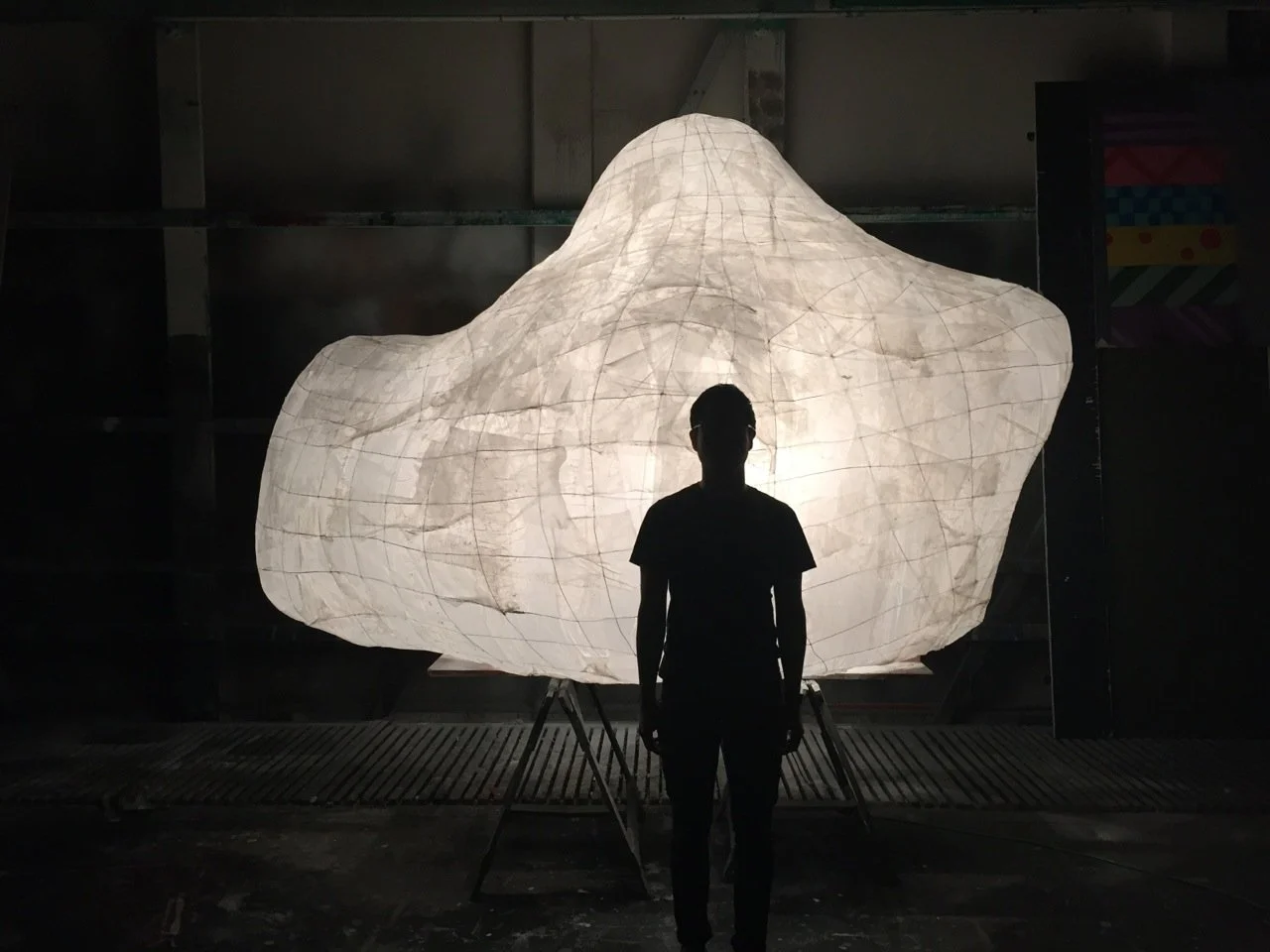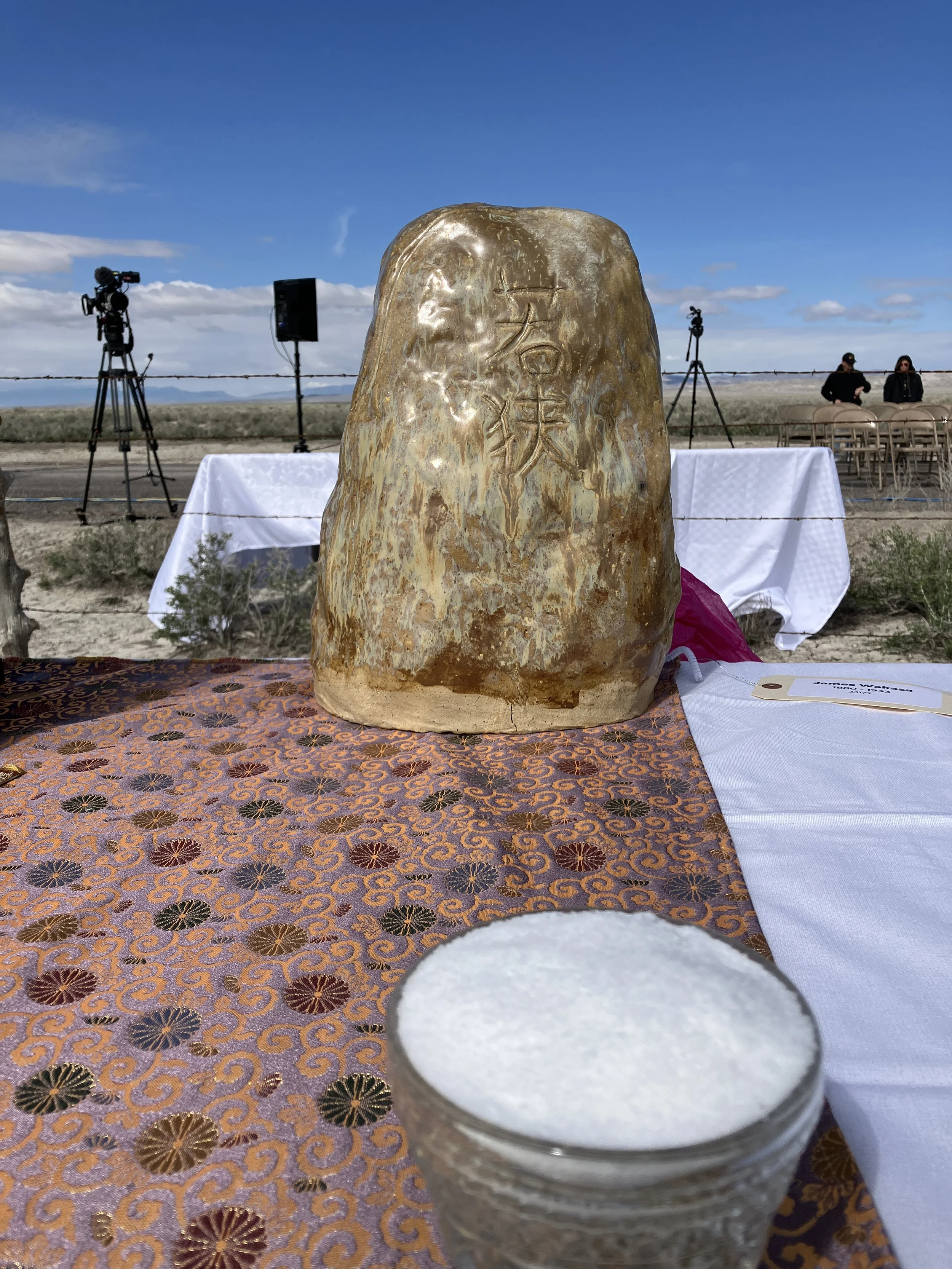
Art Inspired by Wakasa
Artists have created works that explore the intergenerational trauma of James Wakasa’s murder and the joy and wonder that the discovery of his monument brought to camp survivors and descendants. These pieces express the monument’s history, attempts to control it and the ongoing struggle to preserve Mr. Wakasa’s story and legacy.
Akemi Yamane Ina: Painted Tsuru for Justice
Born in the Topaz concentration camp, Akemi Yamane Ina paints large-scale tsuru to protest injustice and honor those who suffer from racism, incarceration, and war. She has created hundreds of hand folded paper flowers to protect and honor the Wakasa Memorial site at Topaz.
Yoshinori Asai is an artist from Osaka, Japan, known for his work with natural materials, including paper mache. He created the Wakasa Spirit Stone lantern using rattan and washi paper, inspired by the original monument that honored James Hatsuaki Wakasa. Asai’s lantern evokes remembrance, resilience, and the quiet power of handmade forms.
Glenn Mitsui is a descendant of Tule Lake, Heart Mountain, and Topaz. Glenn creates films projected onto the Wakasa Spirit Stone at the very sites where men were killed in the U.S. concentration camps—illuminating erased histories through light, memory, and motion.
Brandon Shimoda is a yonsei poet and writer. His book The Afterlife is Letting Go opens with the story of James Wakasa and the removal of the memorial stone at Topaz. His work explores memory, ancestry, and the legacy of incarceration.
“The stone… was being made to witness and endure something beyond its control. It was humiliated. . .Since its removal, it had inspired distress, re-division. It seemed that another stone was warranted, a second stone to console the spirit of the first.”
— BRANDON SHIMODA
Erin Shigaki is a Seattle-based artist, Minidoka descendant and activist whose community-centered work explores the Japanese American incarceration experience and its ties to present-day injustices. Through public art and storytelling, she reclaims history, uplifts intergenerational resilience, and advocates for social change.
Photo by Barry Johnson
Patrick Hayashi was born in the Topaz concentration camp. He is an artist who works in many mediums, including collage, oils and watercolor. His paintings reflect on memory and loss, and include a series inspired by hinotama—ghostly fireballs seen in the skies above Topaz after the 1943 killing of James Wakasa.
























